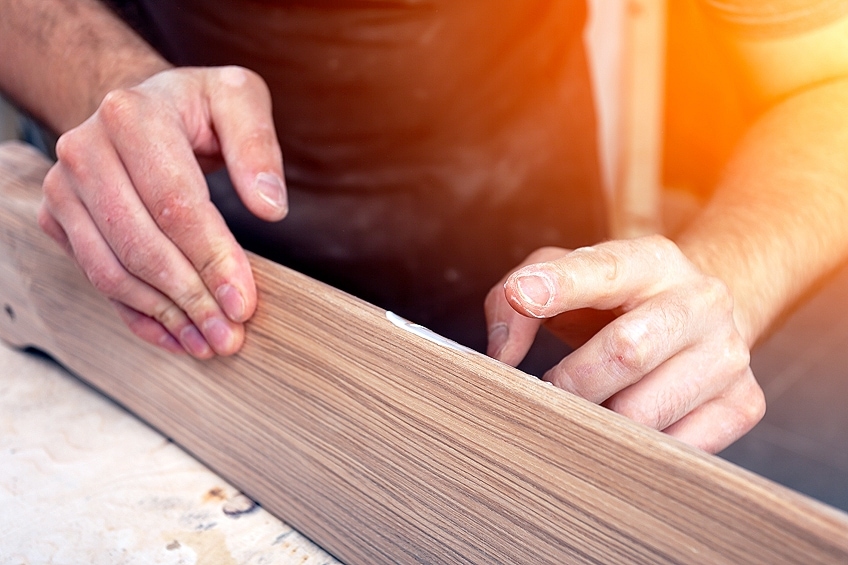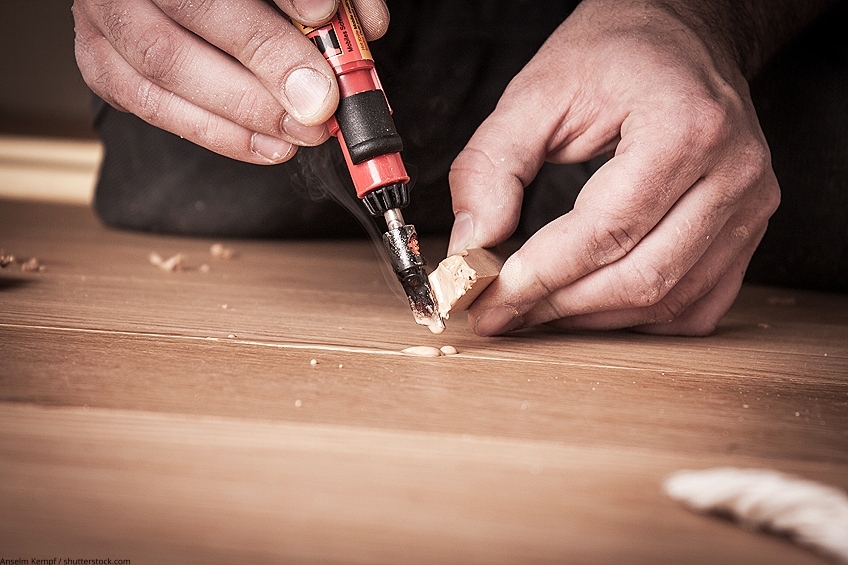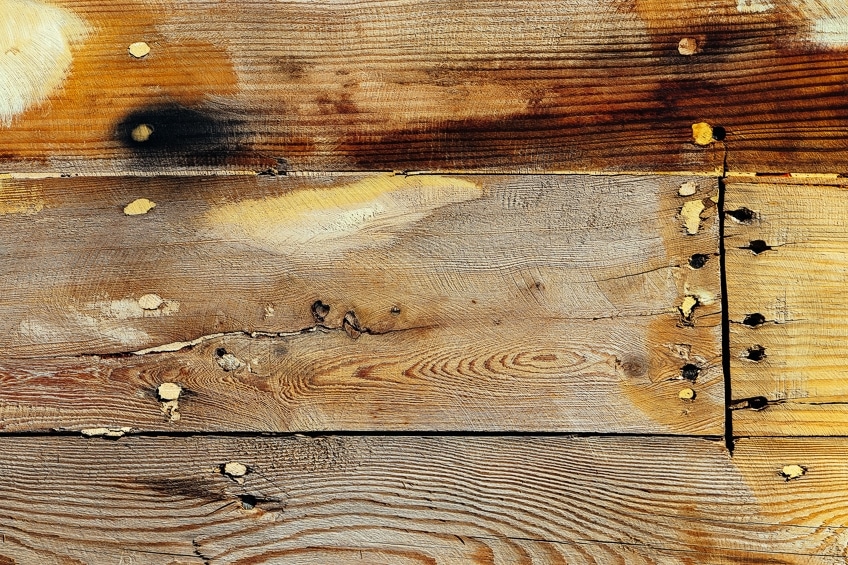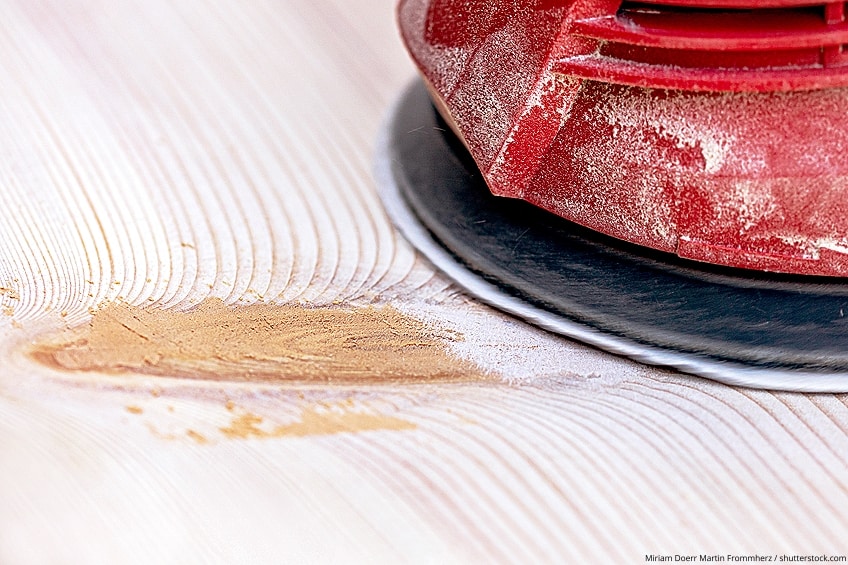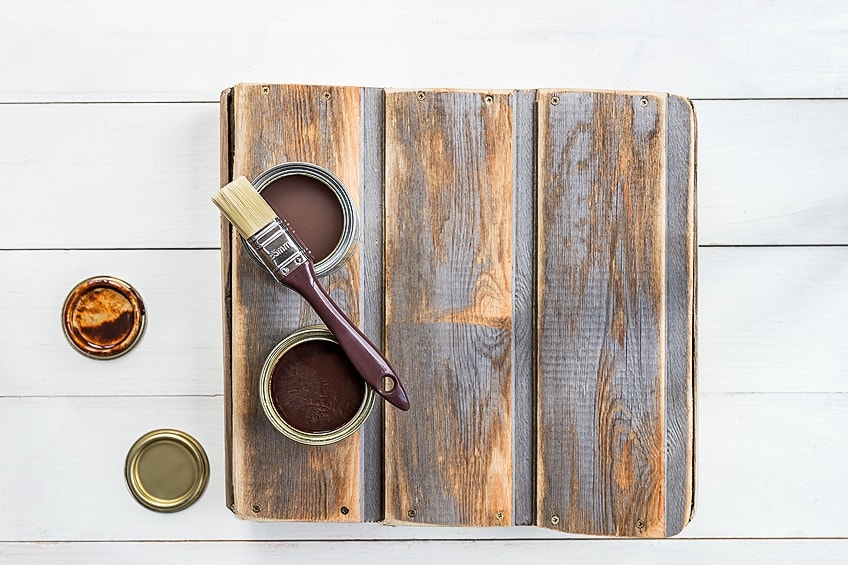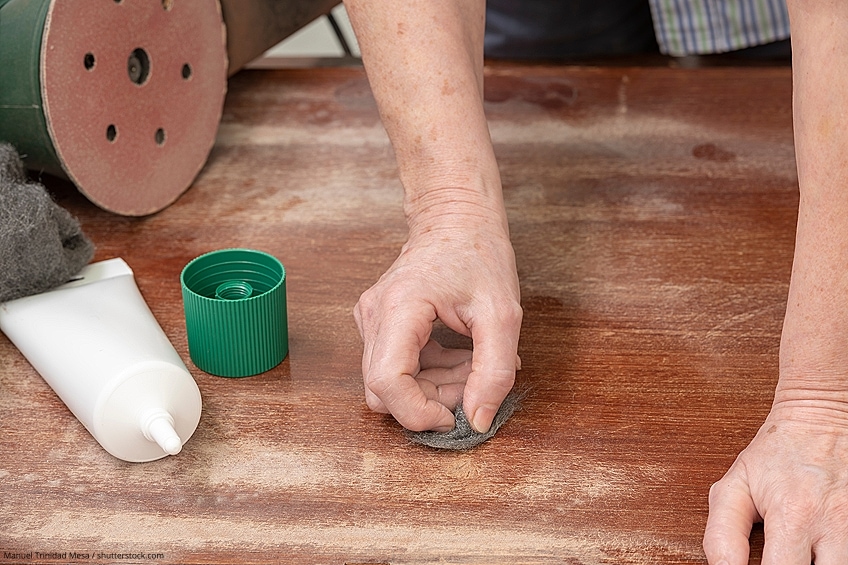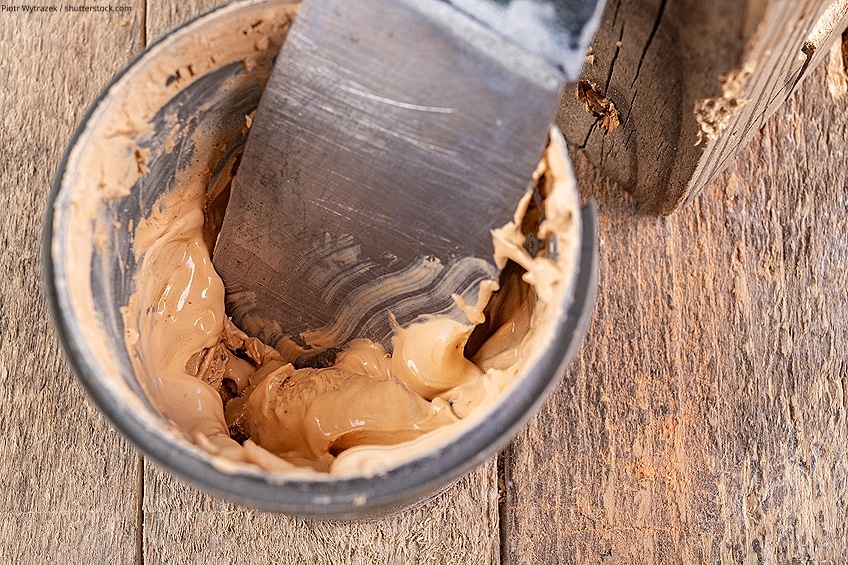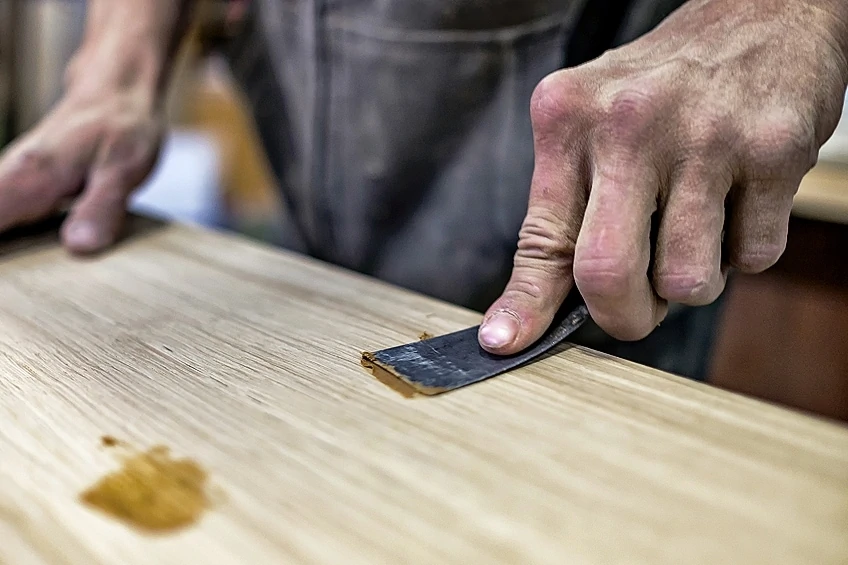How to Use Wood Filler – Using Wood Putty The Right Way
This post may contain affiliate links. We may earn a small commission from purchases made through them, at no additional cost to you. You help to support resin-expert.com
Wood is a beautiful material that is used in our homes for interior and exterior uses. Although wood is quite versatile, it tends to rot, decay, crack and depreciates due to wear and tear. So, are you looking for a way to prolong the lifespan of your wood? Then a wood filler is the best choice to fix and restore your furniture, shelves, doors, beams, and more. So, how do you get started with a wood filler? We show you how to use wood filler the right way.
Table of Contents
When to Use Wood Filler
Wood fillers are suitable to be used on any type of wood surface. This is the easiest way to maintain and restore damaged wood of any type. The wood filler that you choose should depend on your project. For example, you get outdoor wood filler for decks, wood filler for indoor surfaces, and so on.
Certain scenarios require wood to be replaced. You must replace wood when 50% or more of it is rotten. You may also need to replace wood if you have used a wood filler on the surface at least three times, or if the wood is supporting a heavy load.
If a larger part of the wood has been taken out, then you may also need to replace it. Wood filler is suitable for decay, cracks, holes, and so on. This is a good solution for crafts projects and avoiding replacing expensive wooden pieces. Wood filler is easy to use. Liquid wood filler can also be used to fill internal damage in wood. Wood putty can be used to mold lost areas of wood, cover scratches, holes, and cracks.
How to Use Wood Filler
The application process of a wood filler depends on three things. These are the unique conditions for the job you are working on, the surface you will be working on and the type of filler you are using. There are a few steps that must be followed when applying the wood filler to your project. The following tutorial is based on a thick consistency wood filler being used on cracks, gouges, gaps, and holes in the wood.
Preparing the Wood Surface
Make sure that the wood surface is ready for the filler. Remove any loose pieces of rotten or decayed wood. A wood filler cannot be used on soft and crumbling wood. Clear away rotten wood until you get a solid wooden surface. Any other obstacles and flaking paint should be removed as well.
The next step is to sand the prepared surface, making sure that you get a smooth area that you can work with. Sand all the rough edges until you have an easy area to fill. Clean the wood from any sanding residues before you begin the application process. Make sure that the wood is clean and dry so that it adheres to the wood filler.
Applying the Wood Filler
Take the wood filler and apply it to your clean and dry surface. You can effectively do this process using a putty knife. Apply the wood filler on the edges first, then press it down into the cracks and holes. You should continue applying the filler until all the cracks and holes have been filled up.
Press down the wood filler to ensure that there are no gaps or open areas left unfilled.
Use the knife to smoothen out the surface. Overfilling will ensure that the hole or crack will remain covered since the wood filler can shrink a bit when it is curing. If there are any messy patches, clean them up before the filler dries. This is easy to do, but it depends on the type of wood filler you are using.Water-based filler can be cleaned up with water, and oil-based fillers should be cleaned with acetone.
Leave the Wood Filler to Dry
Let the filler dry completely before you move on to the next step. Ensure that you do not touch, paint, or sand this filler until it has dried completely. The drying times differ depending on the type of product you are using. Drying time also depends on external influences like humidity and temperature. Always check the manufacturer’s guidelines because drying times vary from product to product.
Sanding Down the Dried Wood Filler
You can sand the wood filler when it has dried completely. Sanding will produce an even and smoother finish. Sanding should be done so that the wood filler can match the rest of the wooden surface. Make sure there are no noticeable differences between the filler and wood when you wipe the surface.
Finishing the Wood
Once the area has been sanded completely, you can now finish the process so that the filled-in areas have blended effectively. Painting or staining the wood is the next step and it’s an optional choice. Make sure that you have the right products for this process. If you are dealing with exposed wood, ensure that the wood filler has the right color that matches the wood. You can also dye some fillers before they completely set.
You can use a white wood filler on painted or sealed white-coated surfaces. Staining a wood filler can be a difficult process because in most cases you will still notice the difference between the filler and the wood. You can try applying more layers of stain on the filler than on the wood until both surfaces match.
Different Types of Wood Filler
We have outlined a few of the best types of wood fillers below. There are a lot of different types available. The type of wood filler you choose should depend on the type of wood you are working on and the kind of damage you want to fix. Are you looking for an outdoor wood filler for decks? A stainable wood filler? Something to fix furniture indoors? Each different type is unique.
Solvent- and Water-Based Fillers
Wood fillers can either be solvent-based or water-based. You can use both on all types of wood repairs and they have a few differences between them:
Water-Based Wood Fillers
Water-based wood fillers are safe to use because they emit no or less odor. Water-based wood fillers have a low quantity of volatile organic compounds (VOCs). These fillers are made from gypsum, wood fiber, and cellulose. Water-based fillers also dry very quickly. The filler is easy to clean up, and you can use water to thin them. Water-based fillers are versatile. However, this type of wood fillers is not as durable as solvent-based wood fillers.
Solvent-Based Wood Fillers
These wood fillers can emit a strong odor, and they have a higher VOC content. Oil-based wood fillers are more difficult to clean or thin out. This is because solvents are needed to do this.
You also need more time when handling these types of fillers because they take longer to cure. They are more expensive, durable, and water-resistant. They are the best exterior wood fillers since they are more weather resistant.
Epoxy Wood Filler
An epoxy wood filler has high levels of strength and durability when it comes to fixing wood. It is a substance that is perfect for most DIY projects. The hardener and the epoxy must be mixed so that they can cure and turn into a strong material.
These wood fillers can either be putty or liquid. If you have wood that has a lot of internal damage, then liquid wood filler would be a perfect choice. This filler can seep into the wood through the cracks, holes, and pores as a way of restoring the internal structure and strength of wood.
Epoxy wood putty can be shaped and molded to fit into cracks, holes, and chips. Epoxy produces some of the best wood putties for fixing furniture or filling small gaps in wood. This filler is durable and resistant to heavy usage.
Interior or Exterior Wood Filler
When choosing the best wood filler, you should consider whether it will be suitable for internal or exterior use. Most of the exterior wood fillers are solvent-based, strong, and weather-resistant. This is a good choice for filling things like decks.
Interior wood filler is less toxic. This filler is often not as durable, so it will not last long if it is applied on outdoor surfaces. Before you choose the best wood filler, you should know where you will be applying the filler.
How to Select the Right Wood Filler
There are many different types of wood fillers available. There are a handful of factors that you must consider when choosing the right product for your project. We have listed these below.
The Application
Most wood fillers are suitable for individual applications or tasks. You should consider the type of application for your project before choosing the wood filler. You may require the best wood putty for filling gouges and nail holes in some of your furniture items. You might need an outdoor wood filler for decking or a liquid filler for pouring into the wood.
Buy a wood filler that is best suited for the project you want to use it for, and only buy the product when you know what you want to use it for.
Coloring
Color has a vital role when choosing the right wood filler. The wood filler is meant to cover marks and patches on your wood. So, the ideal product should blend naturally with the wood without taking away the natural look of wood. Fillers come in different shades that resemble different wood types.
You can either buy a wood filler that matches the shade of your wood or go for a wood filler that can easily be stained or painted. A filler with the wrong color on exposed wood will really stand out.
Wood Filler Consistency
Wood fillers can either be thick putty or thin liquid wood fillers. Both of these consistencies are suitable for specific applications. The best wood putty product can be molded into difficult holes and shapes. You can use it to fill divots, scratches, and cracks. You can also apply putty to wood from all angles.
The liquid type is easily absorbed by wood to fill in the pores and restore the damaged internal structure of the wood. A thin wood filler is not always suitable for filling external cracks or holes in wood. You can only pour it over wood, and it cannot be used to fill wood damage on vertical surfaces.
Format
The packaging of the wood filler determines how you can apply the product. Wood fillers come in putty sticks, tubes, tubs, or mixable epoxy forms. The ones that come in tubs are quite easy to use since they do not require mixing. The tubes are best suited for small surface problems since they can be squeezed directly into the wood. You must mix or knead the two-part wood fillers before application. The other important factor to consider is the wood filler quantity, this depends on the size of your project. Fillers that come in tubs can be useful when it comes to large-scale projects.
Strength
The other important aspect to consider is the strength of the wood filler. A stronger filler is necessary for harder wood. Some fillers tend to be powdery when dry, and do not hold up as firmly compared to others. These fillers are suitable for filling cracks and holes that are not under pressure, and for small interior jobs. Use a strong filler for exterior use or when working on heavily used surfaces like decks.
Wood Filler Tips and Tricks
The application process of a wood filler is easy and straightforward. However, you might need a few extra tips to get the expected perfect finish. The following are some of the tricks that can be helpful during this process:
- Make sure that you mix the wood filler before applying it to the wooden surfaces. This will ensure that the filler has the right consistency and can be used smoothly on the wood. This will not work for wood fillers that come in tubes.
- Do not use the wood filler as a replacement for screws, glue, or nails. Filler is not suitable for bonding two pieces of wood together. It can only be used in covering holes, cracks, or gaps. When the wood filler has dried, it becomes more like wood and you can use it with glue or any other mechanical fasteners.
- A tack cloth is suitable for wiping the sanded area. The tack cloth will ensure that all the sanded residues have been cleared away. This will achieve a perfectly even and smooth finish.
- If you want to achieve the right shade, then pre-coloring the filler before use is a good idea. You can mix the filler with a wet stain before applying it. This is an easy process rather than waiting until the filler has been applied to start staining it. For the best results, the stain should be a bit darker because it will lighten when it has fully dried.
- Apply a water-based stain only when you are using a water-based wood filler, and use an oil-based stain on an oil-based wood filler.
- It is advisable to apply more wood filler than what is required. This is because wood fillers can shrink when they dry. Any excess filler can be sanded down when it has dried completely.
- You have limited time before the epoxy starts to cure, so you must work fast. Because of this reason, it is important to have everything prepared and ready before you start mixing the epoxy.
- Do a thorough inspection of the wood if you are dealing with a large crack in the wood before using the wood filler. A wood filler is usually only suitable for small and minor damages that do not affect the overall structure of the wood.
Frequently Asked Questions
Can You Keep Unused Wood Filler?
Some of the wood fillers can be stored for later use. However, the wood filler must be stored properly in an airtight container. You can wrap the sealed wood container in plastic wrap so that it remains sealed completely.
Does Wood Filler Take Long to Dry?
When it comes to wood fillers the drying time depends on how deep the hole or crack is. Most wood fillers take between 20 minutes to 24 hours to dry. It is advisable to follow the manufacturer’s guidelines because drying times vary from product to product.
How Long to Wait Before Sanding a Wood Filler?
Most wood fillers dry to sand after 30 minutes. But this varies depending on the product being used. So, the wood filler must dry completely before sanding to produce excellent results.
Is it Necessary to Prime Wood Filler Before Painting?
Priming is recommended, although the wood filler can be applied directly to the wood surface. This is because the wood and the wood filler hold paint in different ways. Moreover, there might be some visible differences in the finished painted surface.
And there you go, our complete guide to the best wood fillers. Follow our guidelines to help you find the right wood filler product for your next DIY project. Try some of the products listed above, as these are the best wood filler in their different categories. We hope you have an easy time achieveing a perfect result with your wood filler project ahead!


